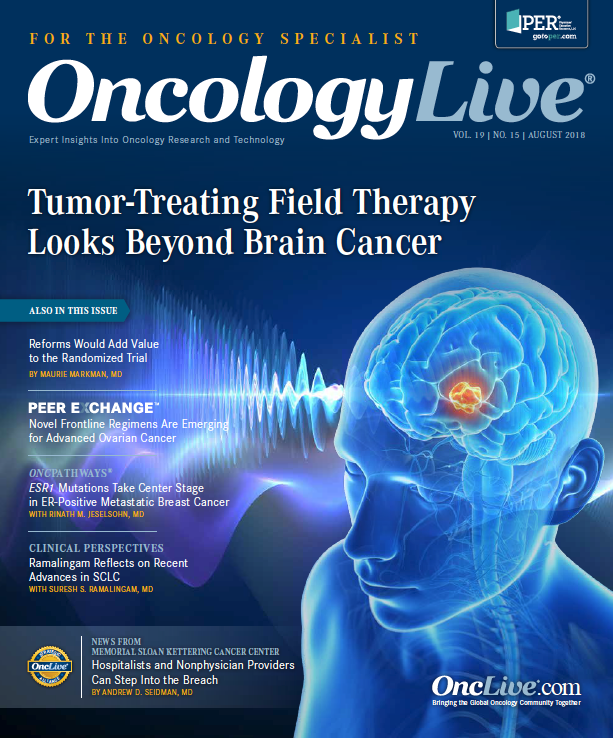Dana-Farber Researcher Sees Biomarker Potential in ESR1 Mutations
Rinath M. Jeselsohn, MD, discusses the detection and clinical implications of ESR1 mutations.
Rinath M. Jeselsohn, MD
As a medical oncologist and investigator, Rinath M. Jeselsohn, MD, focuses on the detection and clinical implications of ESR1 mutations in estrogen receptor—positive breast cancer. She is a member of the research team in the lab of Myles A. Brown, MD, at Dana-Farber Cancer Institute in Boston, Massachusetts, where investigators are seeking to elucidate the factors underlying the mechanisms of hormone responsiveness, particularly steroid hormone receptors, in human cancers.
OncLive: What role do ESR1 mutations play in breast cancer biology?
What is the clinical significance of ESR1 mutations?
What are the prognostic implications?
How does the detection of the mutation guide treatment decision making, and how might this be a factor in the future?
What are the most significant unanswered questions in understanding ESR1 mutations in breast cancer?
Jeselsohn, who has led numerous studies into ESR1 mutations, discussed the field in an interview with OncologyLive®.Jeselsohn: The ESR1 mutations are drivers of resistance to endocrine treatment that evolve under the selective pressure of endocrine treatments. We recently showed that the ESR1 mutations also have neomorphic properties that drive metastases.Studies utilizing cell-free DNA [cfDNA] show that the ESR1 mutations are found in up to 40% of patients with metastatic ER [estrogen receptor]—positive disease and these mutations are associated with decreased response to aromatase inhibitors and fulvestrant [Faslodex]. We now have a well-defined mechanism of resistance that can easily be detected by a blood test and found in a substantial number of patients with ER-positive metastatic breast cancer.cfDNA studies showed that ESR1 mutations are associated with decreased overall survival in metastatic ER-positive breast cancer. This was more significant for the Y537S mutation.Currently, the ESR1 mutations do not guide treatment decisions. However, in the future, these mutations could guide the use of newer endocrine treatments that are currently in clinical development and may target the ESR1 mutations. In addition, the presence of ESR1 mutations could guide the use of novel targeted treatments in combination with endocrine treatments. Currently, these include CDK4/6 inhibitors and everolimus [Afinitor]. In addition, we and other groups are studying novel therapeutic targets to target the ESR1 mutations.Our studies and other groups’ are now revealing that the ESR1 ligand binding domain mutations are different. However, the clinical relevance of these differences has not been elucidated. In addition, will better targeting of ESR1 mutations lead to improved outcomes in metastatic ER-positive breast cancer and will this be different for the different ESR1 mutations?




